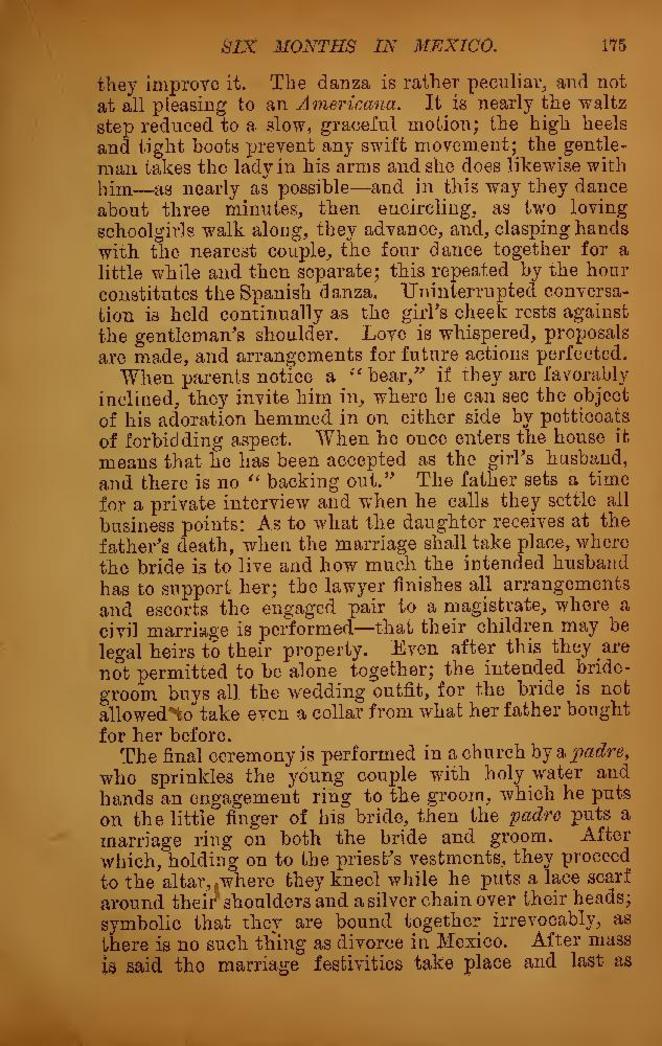they improve it. The danza is rather peculiar, and not at all pleasing to an Americana. It is nearly the waltz step reduced to a slow, graceful motion; the high heels and tight boots prevent any swift movement; the gentleman takes the lady in his arms and she does likewise with him—as nearly as possible—and in this way they dance about three minutes, then encircling, as two loving schoolgirls walk along, they advance, and, clasping hands with the nearest couple, the four dance together for a little while and then separate; this repeated by the hour constitutes the Spanish danza. Uninterrupted conversation is held continually as the girl's cheek rests against the gentleman's shoulder. Love is whispered, proposals are made, and arrangements for future actions perfected.
When parents notice a "bear," if they are favorably inclined, they invite him in, where he can see the object of his adoration hemmed in on either side by petticoats of forbidding aspect. When he once enters the house it means that he has been accepted as the girl's husband, and there is no "backing out." The father sets a time for a private interview and when he calls they settle all business points: As to what the daughter receives at the father's death, when the marriage shall take place, where the bride is to live and how much the intended husband has to support her; the lawyer finishes all arrangements and escorts the engaged pair to a magistrate, where a civil marriage is performed—that their children may be legal heirs to their property. Even after this they are not permitted to be alone together; the intended bridegroom buys all the wedding outfit, for the bride is not allowed to take even a collar from what her father bought for her before.
The final ceremony is performed in a church by a padre, who sprinkles the young couple with holy water and hands an engagement ring to the groom, which he puts on the little finger of his bride, then the padre puts a marriage ring on both the bride and groom. After which, holding on to the priest's vestments, they proceed to the altar, where they kneel while he puts a lace scarf around their shoulders and a silver chain over their heads; symbolic that they are bound together irrevocably, as there is no such thing as divorce in Mexico. After mass is said the marriage festivities take place and last as
